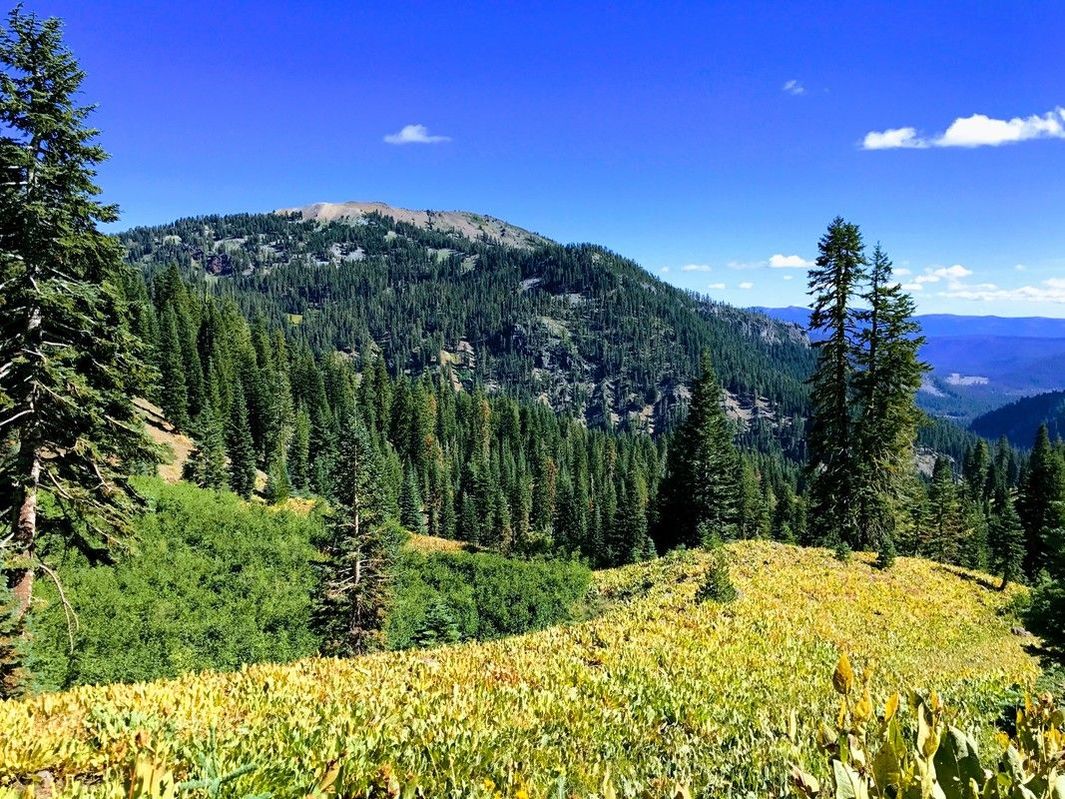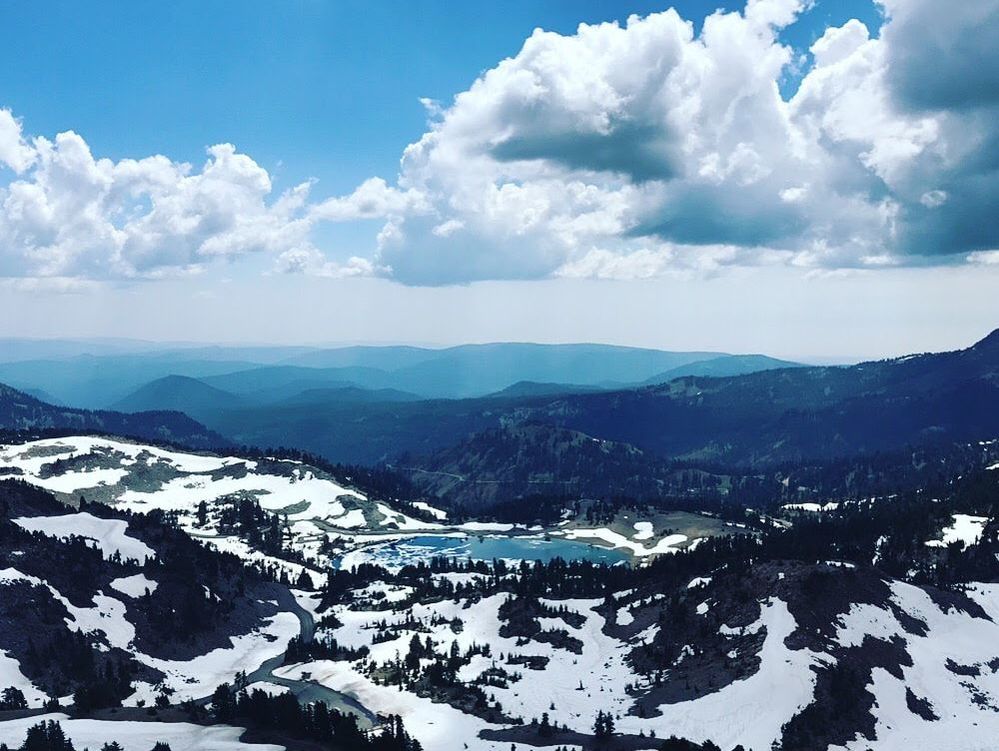I am broadly interested in investigating plant responses to climate change. Specifically, I study phenological responses to environmental cues and the fitness consequences of those responses. My study system is Streptanthus tortuosus, a native California wildflower that is adapted to a wide range of environments and exhibits remarkable life history and morphological variation in response to climate. Its ability to adapt to disparate environments makes it an ideal study organism for my questions because climate change is predicted to expose organisms to novel combinations of abiotic and biotic conditions.
The effects of snow on phenology
In mountainous regions, snow is an important dictator of emergence time and conditions experienced during the growing season such as daylength, temperature, and water availability. However, snowpack is diminishing with climate change and has the potential to disrupt adaptive cue responses and incur negative fitness consequences. If plants flower too early, their buds and flowers may be exposed to damaging frosts; if they flower too late, they may encounter drought conditions at the end of the season. In this project, I aim to elucidate the consequences of phenological differences induced by spatial and temporal variation in snowmelt across an elevational gradient for S. tortuosus in Lassen Volcanic National Park. To do so, I have been measuring the effects of snowmelt timing on flowering time, flowering synchrony, and fitness in several populations since 2017, and plan to conduct a snow removal experiment in spring 2020.
In mountainous regions, snow is an important dictator of emergence time and conditions experienced during the growing season such as daylength, temperature, and water availability. However, snowpack is diminishing with climate change and has the potential to disrupt adaptive cue responses and incur negative fitness consequences. If plants flower too early, their buds and flowers may be exposed to damaging frosts; if they flower too late, they may encounter drought conditions at the end of the season. In this project, I aim to elucidate the consequences of phenological differences induced by spatial and temporal variation in snowmelt across an elevational gradient for S. tortuosus in Lassen Volcanic National Park. To do so, I have been measuring the effects of snowmelt timing on flowering time, flowering synchrony, and fitness in several populations since 2017, and plan to conduct a snow removal experiment in spring 2020.
Photothermal responses to varying moisture
Plants frequently require accumulation of photoperiod, temperature, and moisture to flower. However, as the climate changes, the combinations of cues that plants historically used to time events like emergence, reproduction, and growth are becoming increasingly decoupled and unreliable. To investigate how phenology and synchrony vary in response to changing conditions, I plan to:
1) model photothermal responses under varying moisture conditions, and
2) simulate climate change across the S. tortuosus range according to projections for the late 21st century in manipulative common garden experiments, and break correlations between photoperiod, temperature, and moisture in ways that mimic anticipated conditions.
The goal is to determine how cues affect flowering time, either singly or in correlation with other cues, as well as evaluate changes in flowering time as global warming proceeds.
Plants frequently require accumulation of photoperiod, temperature, and moisture to flower. However, as the climate changes, the combinations of cues that plants historically used to time events like emergence, reproduction, and growth are becoming increasingly decoupled and unreliable. To investigate how phenology and synchrony vary in response to changing conditions, I plan to:
1) model photothermal responses under varying moisture conditions, and
2) simulate climate change across the S. tortuosus range according to projections for the late 21st century in manipulative common garden experiments, and break correlations between photoperiod, temperature, and moisture in ways that mimic anticipated conditions.
The goal is to determine how cues affect flowering time, either singly or in correlation with other cues, as well as evaluate changes in flowering time as global warming proceeds.

Adaptive differentiation in phenological traits
Understanding how phenological traits vary in response to the environment and in what cases this variation is adaptive has important implications for the biological consequences of climate change. Phenological traits are commonly adapted to local environmental conditions, but divergence can also be due to neutral factors like genetic drift. Although examples of adaptive divergence are ubiquitous, the relative roles of neutral versus adaptive processes in shaping divergence continue to be debated. Additionally, population connectedness and local adaptation affects divergence: for example, local adaptation can aid evolutionary response when alleles originally adapted to warm environments at lower elevations assist high elevation populations adapt to warming temperatures. However, such adaptation would not take place at all if gene flow is inhibited. I am interested in exploring these factors in the context of adaptation to climate by answering the following questions:
Understanding how phenological traits vary in response to the environment and in what cases this variation is adaptive has important implications for the biological consequences of climate change. Phenological traits are commonly adapted to local environmental conditions, but divergence can also be due to neutral factors like genetic drift. Although examples of adaptive divergence are ubiquitous, the relative roles of neutral versus adaptive processes in shaping divergence continue to be debated. Additionally, population connectedness and local adaptation affects divergence: for example, local adaptation can aid evolutionary response when alleles originally adapted to warm environments at lower elevations assist high elevation populations adapt to warming temperatures. However, such adaptation would not take place at all if gene flow is inhibited. I am interested in exploring these factors in the context of adaptation to climate by answering the following questions:
- Do standing genetic variation, heritability, and genetic correlations in phenological traits have the potential to constrain future response?
To answer this question, we conducted controlled crosses in six S. tortuosus populations and will measure traits such as first, peak, and last flowering, flowering duration, size at flowering, and branchiness among progeny with known relatedness to analyze potential constraints. - Is isolation by environment or isolation by distance more important, and what are the implications for future adaptation?
We are growing wild-collected seeds to perform genotyping-by-sequencing and doing an Fst study to relate genetic differentiation as a function of ecological variables like elevation, precipitation, and temperature vs as a function of geographic distance. - Have phenological traits adaptively diverged, and if so, have they diverged in the face of high gene flow?
I will use a combination of multivariate Qst-Fst and Qpc methods across 18 populations of S. tortuosus to evaluate adaptive divergence in relevant life history, morphological, and physiological traits.


